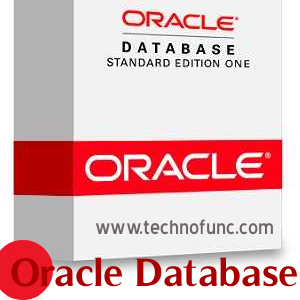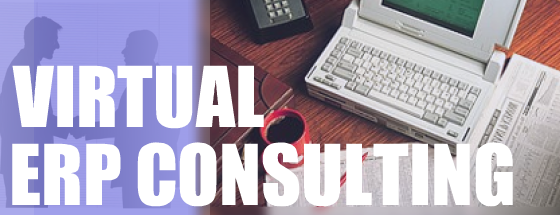ORAC Database
Orac Database and its usage:
The purpose of this article is to explore various databases available in the market today and the features provided by the Orac Database and its usage in context of ERP.
Definition of Database:
 From a layman perspective database is the software where you store data. Database Software helps to have collection of data organized so that the data can be retrieved to be analyzed and converted to useful information. A database is an information software system primarily designed to organize, classify, store, and on demand retrieve large volumes of data with ease and programmatically. Data is stored in a database in digital form and it can be textual (Employee Information, Inventory Information, Accounting Information) or pictures (Any accepted digital file format like gif, jpeg or png or a combination of many file formats), programs (written code or procedures in any computer language) or anything else that can be stored on a computer in binary form.
From a layman perspective database is the software where you store data. Database Software helps to have collection of data organized so that the data can be retrieved to be analyzed and converted to useful information. A database is an information software system primarily designed to organize, classify, store, and on demand retrieve large volumes of data with ease and programmatically. Data is stored in a database in digital form and it can be textual (Employee Information, Inventory Information, Accounting Information) or pictures (Any accepted digital file format like gif, jpeg or png or a combination of many file formats), programs (written code or procedures in any computer language) or anything else that can be stored on a computer in binary form.
The data in the database can be classified while storing the data and generally they are classified using the type of data contents: bibliographic, textual, and statistical or metadata which is data about data. We need Digital databases to manage huge volumes of data and these specialized database programs are managed using the database management systems, which in-turn store the database contents, make possible the creation of data and its regular ongoing maintenance and provide capabilities to users to search data and make it possible to edit and manage data.
Relational Database:
Relational means collection or relations. The basic ability of a relational database is its capability to store the data in the form of tables and columns. A table is the category of data (Employee) and the columns are information about that specific category (Employee Name, Employee Address, Employee Salary, and Employee Date of Joining). Other items are also frequently considered part of the database; as they also help to organize and build the structure around the data, and database conform to a set of standards that make storing and retrieving data from the data easy and possible. The term “Relational Database” was defined by Edgar Codd at IBM Almaden Research Center in 1970. The Relational database terminology is based on set of mathematical terms, which are broadly similar to a SQL database terminology.
Object-relational database:
An object-relational database (ORD), or object-relational database management system (ORDBMS), is a database management system (DBMS) similar to a relational database, but it has an object-oriented database model. In an Object Relational Database the objects, classes and inheritance are directly supported in database schemas and in the query language to retrieve the database data. Object Relational Database also supports extension of the data model with custom data-types and methods. In object-relational databases, the approach is very much similar to that of relational databases that is the data still resides in the database and is manipulated collectively with queries in a query language.
Object-Oriented Databases (OODBMS):
Object Oriented Databases (OODBMSes) are the databases in which the database is essentially a persistent object store for software written in an object-oriented programming language, with a programming API for storing and retrieving objects, and little or no specific support for querying. When database capabilities are combined with object-oriented (OO) programming language capabilities, the result is an object database management system (ODBMS). Advanced Programming languages utilize objects hence OODBMS is ideal for object oriented programmers because of the ability to develop the product and store them in database as objects.
Oracle Database:
ORAC Database/Oracle Database is the most advanced database available today in the market. As explained above some databases only have the minimum feature to enable storage and retrieval of data whereas other advanced databases include programming languages and utilities to support enterprise-level applications like Enterprise Resource Planning and data warehousing. When it comes to commercial databases to use in business operations and business transactions Oracle Database undoubtedly the number one database and has the most advanced feature set available today. Oracle is also the most widely used database for ERP Applications. Many non-oracle ERP systems also use Oracle Database as their database system. The Oracle Database is an object-relational database management system (ORDBMS) produced and marketed by Oracle Corporation.
Oracle uses SQL (Structured Query Language) to retrieve and store data and SQL allows SELECTING, INSERTING, UPDATING and DELETING records in the Oracle Database.
Part Time Assignments for Oracle Database Administrators:
 If you are an Oracle DBA and looking for assignments where you can provide remote database administration services to customers worldwide then please Register Yourself at our TechnoFunc Website and provide a detail of your experience. Assignments are allocated based on a combination of a DBA's talents (expertise + experience), passion, and customers' needs. These groups are coordinated by an Engagement Leader and operate as mostly "self-directed professionals".
If you are an Oracle DBA and looking for assignments where you can provide remote database administration services to customers worldwide then please Register Yourself at our TechnoFunc Website and provide a detail of your experience. Assignments are allocated based on a combination of a DBA's talents (expertise + experience), passion, and customers' needs. These groups are coordinated by an Engagement Leader and operate as mostly "self-directed professionals".
- Hits: 2020
